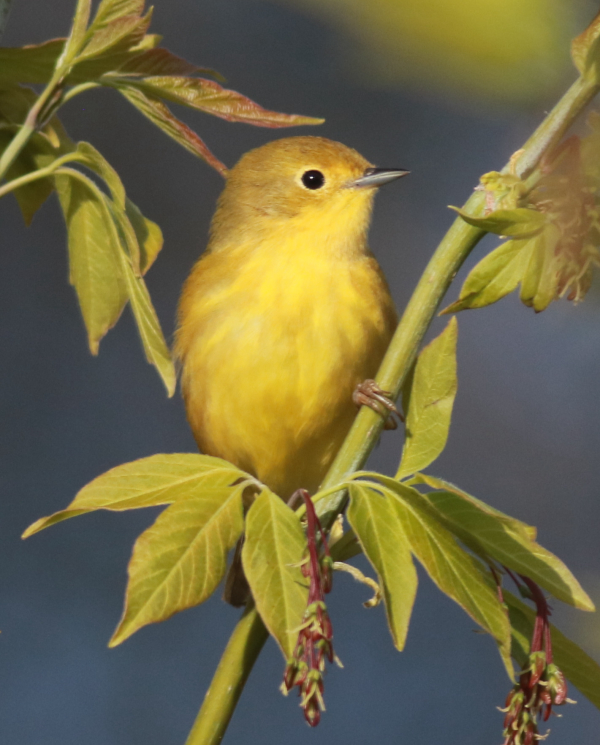
Warblers, such as this young Yellow Warbler, are particularly susceptible to ozone pollution (photo by Paul Konrad).
|
A new continent-wide study reports that pollution regulations in the United States to provide clean air for citizens are also helping to protect birds continent-wide. The study indicates that ozone pollution is most detrimental to small migratory birds, such as warblers, thrushes, vireos, orioles, native sparrows, and finches that make up 86 percent of all North American landbird species. Ozone pollution directly harms birds by damaging their respiratory system, and it indirectly affects birds by harming their sources of food.
Researchers found that air quality improved under the federal program administered by the US Environmental Protection Agency (EPA) due to reduced ozone pollution may have saved more than a billion birds during the past 40 years.
To examine the relationship between bird abundance and air pollution, the researchers used models that combined bird observations from the Cornell Lab of Ornithology's eBird program with ground-level pollution data and existing EPA regulations. They tracked monthly changes in bird abundance, air quality, and regulation status for 3,214 counties over a span of 15 years. The team focused on the NOx (nitrogen oxide) Budget Trading Program, which was implemented by the EPA to protect human health by limiting summertime emissions of ozone precursors from large industrial sources.
“This is the first large-scale evidence that ozone is associated with declines in bird abundance in the United States, and that regulations intended to save human lives also bring significant conservation benefits to birds,” said Catherine Kling, Professor at the Cornell Dyson School of Applied Economics and Management and Faculty Director at Cornell's Atkinson Center for Sustainability. “This work contributes to our ever-increasing understanding of the connectedness of environmental health and human health.”
The information was originally published in the Proceedings of the National Academy of Sciences. To refer to the original article providing the above information, see the Science Daily article at https://www.sciencedaily.com/releases/2020/11/201124150845.htm